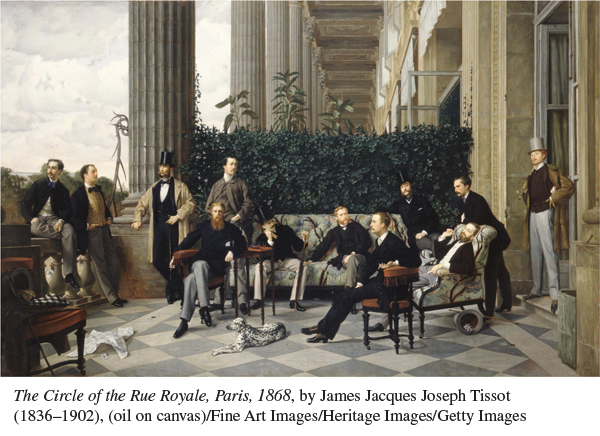A History of Western Society: Printed Page 663
A History of Western Society, Value Edition: Printed Page 635
A History of Western Society, Concise Edition: Printed Page 661
Agents of Industrialization
Western European success in adopting British methods took place despite the best efforts of the British to prevent it. The British realized the great value of their technical discoveries and tried to keep their secrets to themselves. Until 1825 it was illegal for artisans and skilled mechanics to leave Britain; until 1843 the export of textile machinery and other equipment was forbidden. Many talented, ambitious workers, however, slipped out of the country illegally and introduced the new methods abroad.
One such man was William Cockerill, a Lancashire carpenter. He and his sons began building cotton-
Thus British technicians and skilled workers were a powerful force in the spread of early industrialization. A second agent of industrialization consisted of talented entrepreneurs such as Fritz Harkort (1793–1880), a pioneer in the German machinery industry. Serving in England as a Prussian army officer during the Napoleonic Wars, Harkort was impressed with what he saw. Harkort set up shop building steam engines in the Ruhr Valley, on the western border with France. In spite of problems obtaining skilled workers and machinery, Harkort succeeded in building and selling engines. However, his ambitious efforts also resulted in large financial losses for himself and his partners. His career illustrates both the great efforts of a few important business leaders to duplicate the British achievement and the difficulty of the task.
National governments played an even more important role in supporting industrialization in continental Europe than in Britain. Tariff protection was one such support and it proved to be important. The French, for example, responded to a flood of cheap British goods in 1815 after the Napoleonic Wars by laying high taxes on imported goods. Customs agreements emerged among some German states starting in 1818, and in 1834 a number of states signed a treaty creating a customs union, or Zollverein. The treaty allowed goods to move between member states without tariffs, while erecting a single uniform tariff against other nations.
After 1815 continental governments also bore the cost of building roads, canals, and railroads to improve transportation. Belgium led the way in the 1830s and 1840s. Built rapidly as a unified network, Belgium’s state-
Finally, banks also played a larger and more creative role on the continent than in Britain. Previously, almost all banks in Europe had been private. Because of the possibility of unlimited financial loss, the partners of private banks tended to be conservative and were content to deal with a few rich clients and a few big merchants. They generally avoided industrial investment as being too risky.
In the 1830s two important Belgian banks pioneered in a new direction. They received permission from the growth-
Similar corporate banks became important in France and the German lands in the 1850s and 1860s. Usually working in collaboration with governments, corporate banks established and developed many railroads and many companies working in heavy industry, which were also increasingly organized as limited liability corporations.

The combined efforts of governments, skilled workers, entrepreneurs, and industrial banks meshed successfully after 1850 and the financial crash of 1873. In Belgium, France, and the German states, key indicators of modern industrial development — such as railway mileage, iron and coal production, and steam engine capacity — increased at average annual rates of 5 to 10 percent. As a result, rail networks were completed in western and much of central Europe, and the leading continental countries mastered the industrial technologies that had first been developed by the British. In the early 1870s Britain was still Europe’s most industrial nation, but a select handful of nations had closed the gap.